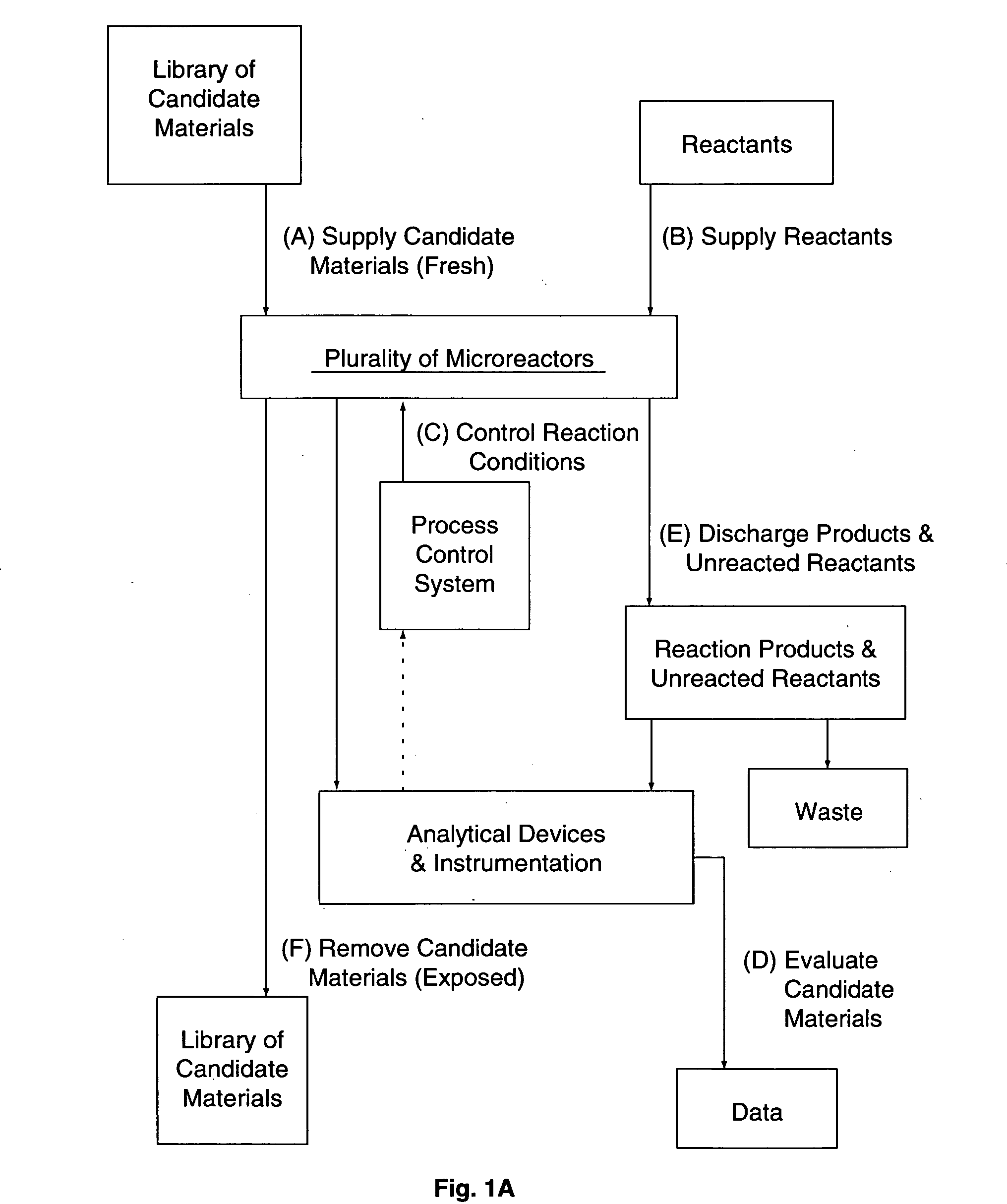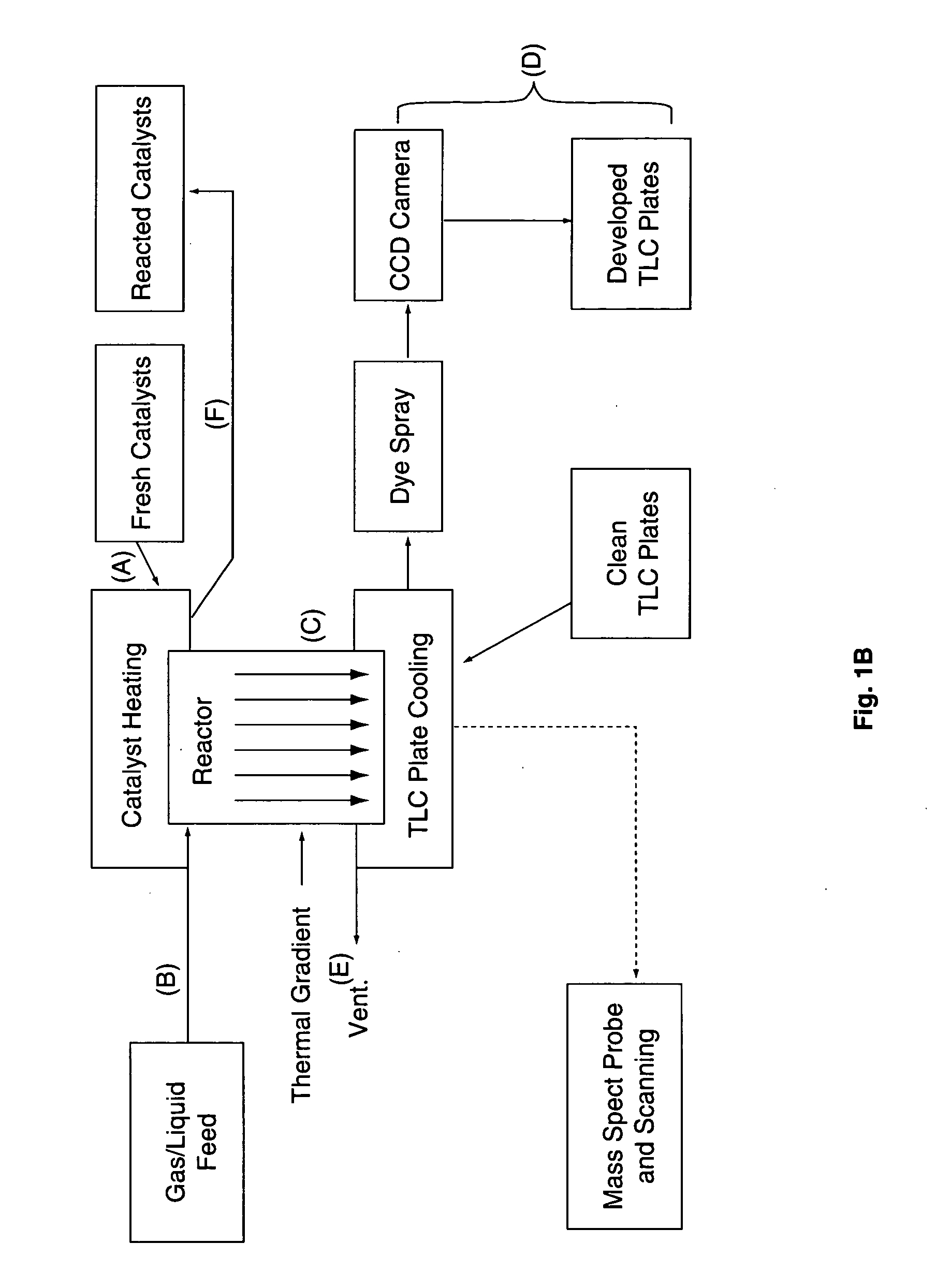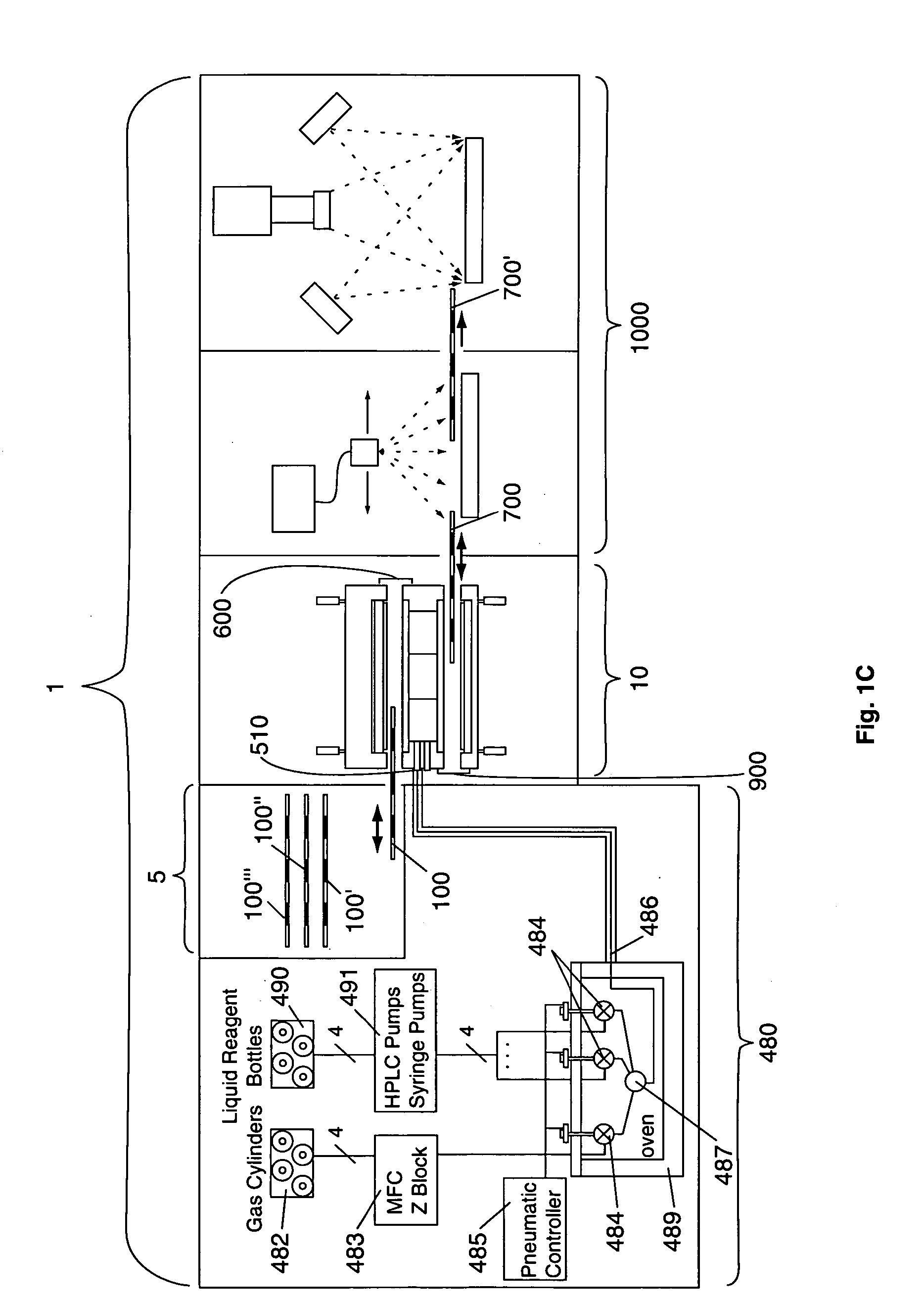Chemical processing microsystems comprising high-temperature parallel flow microreactors
a technology of chemical processing and microreactors, applied in the field of combinatorial chemistry, can solve the problems of not being incorporated into a system suitable for large-scale, or even moderate-scale, combinatorial materials science research, and the application of chemical microreactors to specific research and commercial goals, and achieves the effect of large analytical flexibility and inexpensive manufacturing
- Summary
- Abstract
- Description
- Claims
- Application Information
AI Technical Summary
Benefits of technology
Problems solved by technology
Method used
Image
Examples
example 1
Manufacture of Microreactor / Microseparator
A chemical processing microsystem, substantially as shown and described in connection with FIGS. 18A and 18B, was manufactured as follows. The microsystem can be used, for example, to identify potential heterogeneous catalysts for the direct amination of benzene to aniline.
Reactor Block Array
A first silicon / glass laminae substructure comprising 256 reactor block wells, a fluid supply manifold / flow restrictor substantially as shown and described in connection with FIG. 7B, and a reactor effluent channel for fluid communication with an effluent manifold was formed. The laminae substructure was fabricated from one 4″ diameter double polished p-type Si(001) wafer (International Wafer Service) and one Pyrex 7740 glass wafer (Corning) using standard microprocessing technology.
Fluid distribution components (supply manifold and reactor effluent channels) were formed in the silicon wafer. Briefly, the silicon wafer was coated with 5000 Å low-...
PUM
| Property | Measurement | Unit |
|---|---|---|
| Temperature | aaaaa | aaaaa |
| Temperature | aaaaa | aaaaa |
| Temperature | aaaaa | aaaaa |
Abstract
Description
Claims
Application Information
 Login to View More
Login to View More - R&D
- Intellectual Property
- Life Sciences
- Materials
- Tech Scout
- Unparalleled Data Quality
- Higher Quality Content
- 60% Fewer Hallucinations
Browse by: Latest US Patents, China's latest patents, Technical Efficacy Thesaurus, Application Domain, Technology Topic, Popular Technical Reports.
© 2025 PatSnap. All rights reserved.Legal|Privacy policy|Modern Slavery Act Transparency Statement|Sitemap|About US| Contact US: help@patsnap.com



